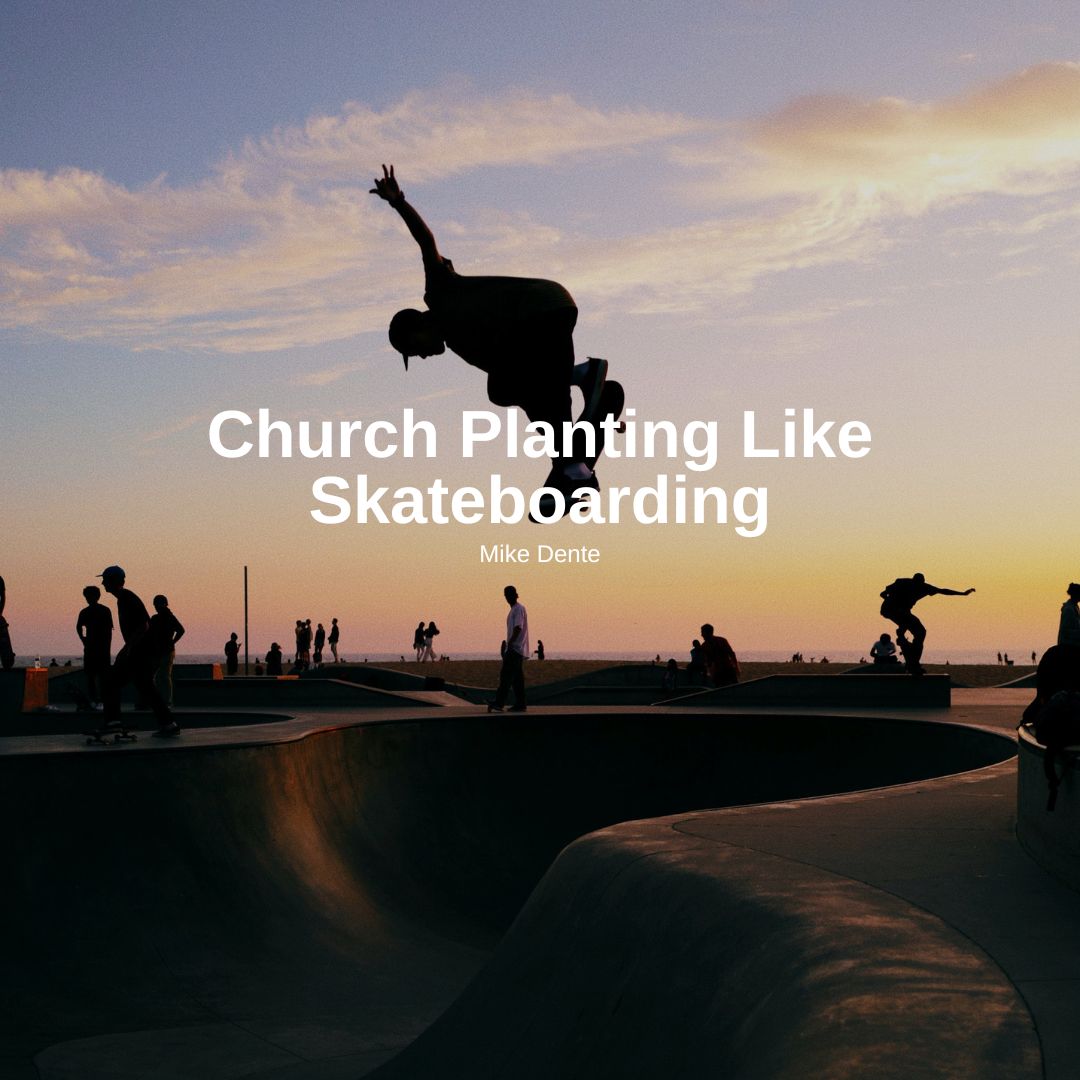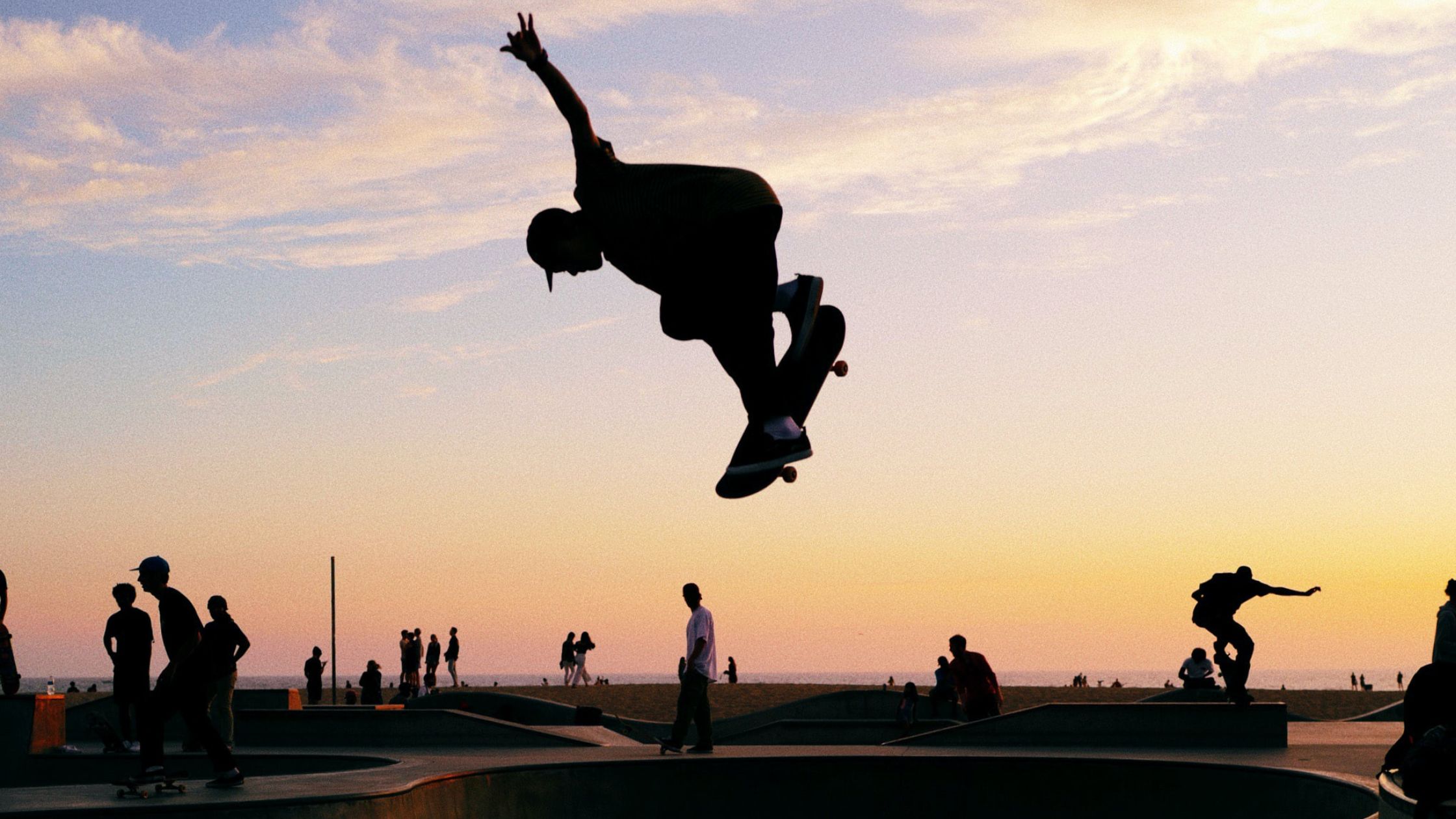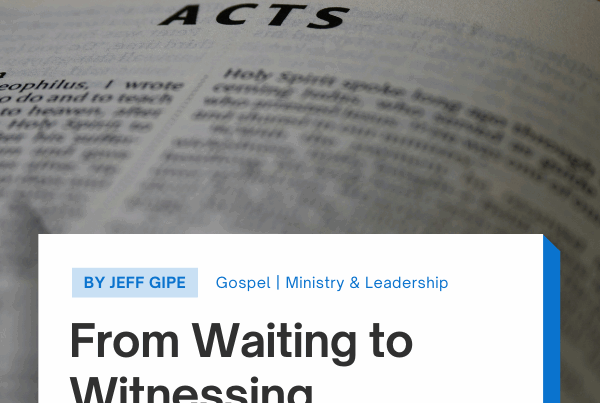
In the Protestant West, we’ve come to see church planting as a mainstream activity for Christians. But I wonder. As we enter an area with no church, the idea of a new one sounds a little invasive to some residents. Yet does a lack of invitation mean there isn’t a need? This reminds me of skateboarders, who rarely ask before trying out a perfect terrain. Can we compare church planting to skateboarding? I want to say we can. My adolescence was spent in the suburbs of Seattle, with miles of urban sprawl dotted with a few haunts occupied by skaters. These were the days I discovered I couldn’t find my balance on a board, but it wasn’t until my thirties that I found I was called to plant a church. I still watch in awe those who fearlessly conquer a half-pipe or effortlessly do a kickback before sliding down a handrail on a staircase only to be chased away by an overzealous groundskeeper. And did I mention the music? Certain skate bands are the only appropriate listening material when caught in Paris gridlock traffic. But you might be asking how does it relate to church planting?
Skateboarding in Paris is an art, as is church planting. I’ve always been amazed at how they’ve occupied forbidden and unexpected terrain here. Sure, there’re the appropriate skate parks perfectly manicured, as one would expect in any big city, but aside from a few parents my age teaching their little ones the art of the board, I don’t see many skaters. And I don’t hear their music. Yet, go to a prohibited corner of the Bastille Opera House or the steps of the Palais de Tokyo Modern Art Museum. You’ll see them tearing up the pavement, utterly unconscious to the world around them. They “know a part of the city no one else does,” a rhythm to life out of sync with all that makes Paris famous; their presence is an urban arrhythmia. The same is true of the church planter in most of Europe.
The Rhythm of Skateboarding
The idea of skateboarding as arrhythmia is a notion I borrowed from reading Brian Glenney and Paul O’Connor’s research on the subject published in late 2022.1 Using Henri Lefebvre’s, Rythmanalysis, they revealed the more subversive qualities of the sport that had existed since its rise to popularity. From a drought in Southern California in the 1970’s when skaters began using empty pools, the same spirit exists in recent times when the sport flourished during the pandemic. They refer to skateboarding as arrhythmia because of its discord with urban life, its counter-culture existence with danger, and its lack of acceptance in the public space. According to Lefebvre, “Everywhere where there is interaction between a place, a time and an expenditure of energy, there is rhythm. Therefore: (a) repetition (of movements, gestures, action, situations, differences); (b) interferences of linear processes and cyclical processes; (c) birth, growth, peak, then decline and end.”2 Arrthymia may go as far as sickness and catastrophe, but generally, the meaning given by Glenney and O’Connor about skateboarding is more discordant and subversive. This may surprise some people, but I believe what these philosophers describe, in principle, should apply to church planting and, in the end, be a strong encouragement for planters.
Messengers of Arrhythmia
The church planter generally isn’t looking for a skate-park-type terrain for their work. As they seek the Lord, they look into a location and spend time there. Some research needs to be done, the on-the-field testing that has all the comfort of the rough smack of pavement on your cheek. But enough prayer and openness lead them to a place with just the right feel. The boards come out, the music of a new work fills the silence, and it all begins. The part of a church plant we all dream of, the people that come to hear the Word of God and the lives changed by the Spirit, is the true arrhythmia of the experience (1 Peter 2:9-10).
As church planters, we aren’t generally what the Municipality has been looking for to better their city. That’s why friction and resistance are closer to the rhythm of the post-Christian culture we live in than we hoped for (2 Corinthians 6:4-10). They know their population and plan for the residents’ betterment of their vision, but I haven’t heard of many mayors asking for churches to be planted. Lefebvre describes arrhythmia in the city as like a child crying in the middle of the night, an insomniac, or an accident in a prominent intersection.3 It’s disruptive, although it’s part of the whole living organism of human activity. It has its place, but it’s not necessarily wanted. Often we church planters also feel the pressure of mall cops chasing us away from distracting the “paying customers.” Yet, this is part of our lot as we say, like the Apostle Paul said in Romans 15:20, “thus I make it my ambition to preach the gospel, not where Christ has already been named, lest I build on someone else’s foundation.” By definition, until the Gospel is regularly preached, and even afterward, we are the messengers of arrhythmia.
But even if the City Council hasn’t invited us, we might want to ask if God has commissioned us. Those dangerous words have been grossly misused to defend a particular obstination to understandable concerns about one’s irreverent or un-gospel-like behavior. This is a great tragedy for the city and gospel unity. I’m not talking about itinerant ministers who feel like they have a call and roam the city under no authority. Jesus has built His Church and uses the leaders He has placed as gifts to the whole for furthering His mission (Ephesians 4:11-15). Given the subversive metaphor of skateboard culture, I understand how my writing could be confused, but that’s where I want to press in. Church planting, done rightly, is a process with the deep involvement of a church, prayer, authority, community, formation, and relationship.
The Everlasting Rhythm of Life
Just like any metaphor breaks down, this is the weakness of mine, but I still maintain the reality of arrhythmia. There’s also a prophetic reason for this. An Old Testament prophet spoke for God and denounced the hurt produced by the rhythms of a society that abandoned their God. They called people to return to the Living God of the covenant, just as John the Baptist was “the voice of one crying in the wilderness,” announcing the coming Messiah. Church planters and evangelists are also called to proclaim the Kingdom in spiritually desolate places overflowing with people. This call is prophetic because we call people into the light from which our society fled generations ago; we proclaim Jesus. Nothing is more arrhythmic than calling people to know the Lord and reminding them that He is coming soon. And yet, this is the very activity that will produce a harvest going into eternity. An arrhythmia for this world that is passing and will one day be swallowed by the everlasting rhythm of Life. Perhaps a reminder the next time we feel the smack of or pass by some forgotten place occupied by skaters, an excellent visual encouragement for our work.
References
1 Brian Glenney and Paul O’Connor, “Skateboarding as Discordant: A Rhythmanalysis of Disaster Leisure,” Sports, Ethics and Philosophy, (Taylor & Francis Online, 2022): https://doi.org/10.1080/17511321.2022.213985
2 Glenney and O’Connor, “Skateboarding as Discordant: A Rhythmanalysis of Disaster Leisure,” 2022.
3 Henri Lefebvre, Rhythmanalysis: Space, Time and Everyday Life, trans. by Stuart Elden and Gerald Moore (London: Bloomsbury Publishing, 2013), 16.










